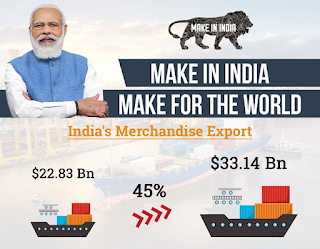The Indian government has been actively pushing to promote domestic manufacturing in the technology sector in recent years, with the aim of reducing the country's reliance on imports and building a self-reliant, globally competitive ecosystem. The government's efforts are driven by the vision of making India a global manufacturing hub, generating employment opportunities, and boosting the economy.
The government has introduced several initiatives and policies to encourage domestic manufacturing, including the "Make in India" campaign, which seeks to create a conducive environment for investment, innovation, and manufacturing in the country. In addition, the government has introduced a production-linked incentive (PLI) scheme to provide financial incentives to companies that manufacture electronic products locally.
The push for domestic manufacturing is particularly significant in the technology sector, where India has traditionally been reliant on imports for components and finished products. By promoting local manufacturing, the government aims to reduce the country's trade deficit, increase its technological capabilities, and support the growth of small and medium-sized enterprises (SMEs).
One of the key sectors where the government's push for domestic manufacturing is expected to have a significant impact is the mobile phone industry. India is one of the largest markets for mobile phones globally, with a vast majority of devices being imported from countries like China. By promoting domestic manufacturing, the government aims to reduce import dependency, create employment opportunities, and enhance India's technological capabilities.
In addition to the mobile phone industry, the government's push for domestic manufacturing is also expected to benefit other sectors such as electronics, automotive, and medical devices. With its large and growing consumer base, India offers immense potential for manufacturers, both domestic and international, to set up operations and tap into the vast market opportunities.
However, there are several challenges that need to be addressed to ensure the success of the government's push for domestic manufacturing. These include issues related to infrastructure, availability of skilled labor, and the ease of doing business. In addition, there is a need for greater collaboration between the government, industry, and academia to foster innovation, research and development, and technology transfer.
In conclusion, the Indian government's push for domestic manufacturing in the technology sector is a significant step towards building a self-reliant and globally competitive ecosystem. By reducing import dependency, enhancing technological capabilities, and creating employment opportunities, the government's efforts are expected to drive growth and development in the Indian economy. However, there is a need for concerted efforts to address the challenges and ensure that the benefits of domestic manufacturing are accessible to all.

Post a Comment